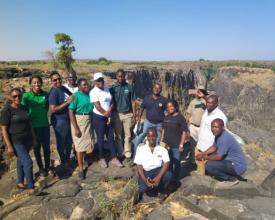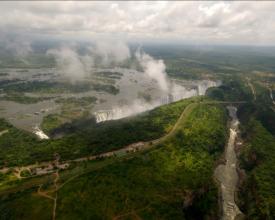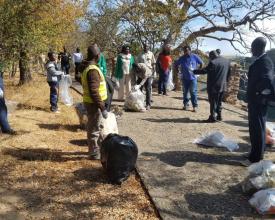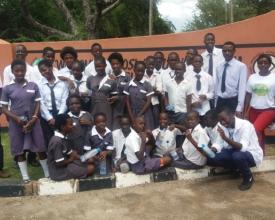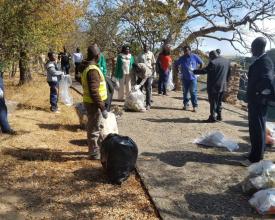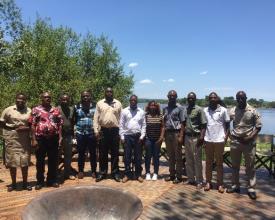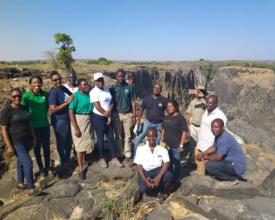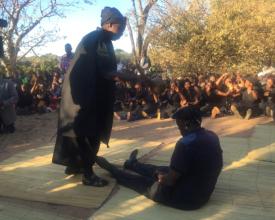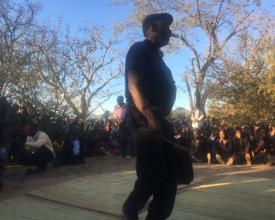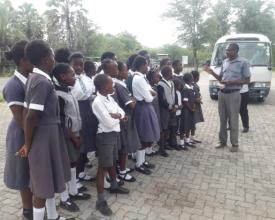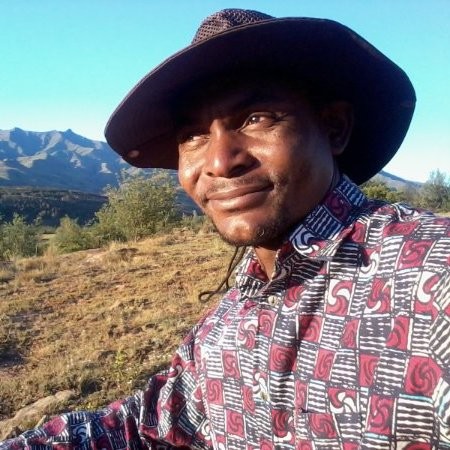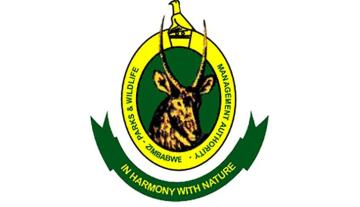
Critical stakeholders engagement: fostering community stewardship for the safeguarding of the natural and cultural heritage of Victoria Falls/Mosi-Oa-Tunya
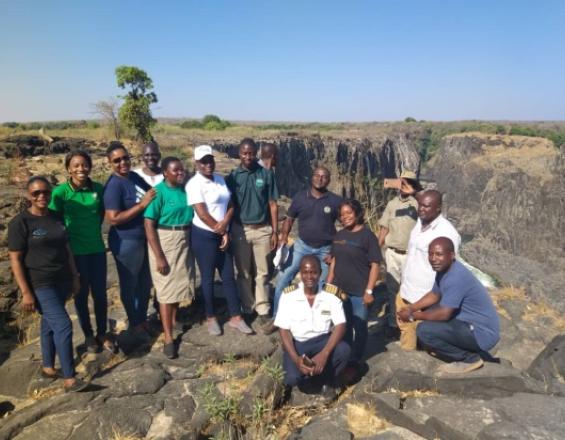
In 1989, the site of Mosi-Oa-Tunya/Victoria Falls was inscribed on the World Heritage list for its outstanding on-going geological processes, unique geomorphological formations, and exceptional natural beauty displayed through daytime and lunar rainbows. This is one of the world’s largest waterfall in the world. However, the site is not only important for its internationally recognized natural values, Mosi-Oa-Tunya/Victoria Falls is also a very important site for local communities in Zambia, Zimbabwe and the wider south-eastern African region, which protect the site’s spiritual and religious values it embodies.
The solution focuses on how these cultural values have been identified, mapped and how the inclusion of critical stakeholders - in combination with awareness raising and education campaigns - have become a change for improved management and for creating a framework for the sustainable economic development of the area, moving steps towards the a less tourism-dependent economy.
Context
Challenges addressed
The solution tackles multiple issues connected to the need for major involvement of all critical groups of stakeholders for the effective and improved management of the Mosi-Oa-Tunya/Victoria Falls World Heritage Site.
Environmental challenges: The site is faced with indiscriminate cutting of trees and uncontrolled burning of site. Stakeholders are highly involved in undertaking site patrols to curb activities that would affect the site negatively.
Social challenges: complex governance with multiple local, national and international stakeholders and difficulties in the implementation of the joint transnational steering committee; lack of local capacity and limited understanding of the important socio-cultural values of the site
Economic challenges: The economies of the towns of Livingstone, Zambia and Victoria Falls, Zimbabwe are highly dependent on tourism.
Tourism Infrastructure Developmental challenges: infrastructure development proposals; need to balance sustainable development and conservation efforts.
Location
Process
Summary of the process
The solutions build on the essential mechanism of critical stakeholder engagement (BB1) and the wider recognition of the site`s multilayered natural and cultural significance (BB2). Through the recognition of the of the wider range of values of the site, the management of the site has benefitted from a wider understanding of the management and conservation needs of the site but also renewed cooperation with local and indigenous communities that have embraced their role as stewards and custodians (BB3) of Mosi-Oa-Tunya/Victoria Falls WHS.
The long-term cooperation with key local actors and the conservation of the site requires to develop other economic avenues to sustainably support communities living around the property. At the same time , the management of the site is highly involved in developing capacities for the future through the active engagement with school children and the creation of a Heritage Conservation Club at Palm Grove School. setting (BB4). The establishment of inclusive and equitable means for stakeholder engagement is the pillar of the solution but this approach requires each building block to be in place, as each block is dependent to one another.
Building Blocks
Critical stakeholder engagement
The key principle behind the governance and management structure of Mosi-Oa-Tunya/Victoria Falls World Heritage Site is critical stakeholder engagement, an approach that aims at including planning and decision-making processes with all key stakeholders and rights holders: from the governments and relevant institutional authorities of Zambia and Zimbabwe to local communities and actors.
Critical stakeholder engagement as a process works on building trust and cooperation between institutional and non-institutional stakeholders. Through this process, local actors and communities are empowered in the exercise of their stewardship towards the site, which further inspires them to engage in conservation and management activities for the long-term safeguarding of the site’s natural and cultural heritage values.
Enabling factors
The building block is enabled by the official recognition of local actors and stakeholders as part of the Steering Committee through the Joint Integrated Management Plan and established agreements between the States Parties of Zambia and Zimbabwe.
With more people settling outside the boundaries of the site, the recognition of the importance of local actors and Traditional Knowledge Systems have allowed for the increased participation of local and indigenous communities as stewards and custodians of the site and its values.
Lesson learned
Critical stakeholder engagement requires a wide understanding of the site and its multilayered significance in order to fully appreciate the relevance and importance attributed to the site by different right holders and stakeholders’ groups. An essential aspect of this process is the creation of an inclusive space for dialogue, in this case the Joint Steering Committee, in which stakeholders can discuss critical issues. These debates follow principles of avoiding situations of antagonism. The constant consultation and involvement has allowed for the early recognition and tackling of possible conflicts.
These processes have allowed for a major recognition of the important role played by local right holders, stakeholders and institutions in the management and conservation of the site and has created spaces for communities to be actively involved in conservation work. It has been fully understood that local communities are the experts in the conservation of the cultural values and attributes of the site, traditional knowledge that has since been incorporated as a key element of the strategies of the joint integrated management plan .
Cultural mapping
Mosi-Oa-Tunya is a site inscribed on the World Heritage List for its outstanding natural heritage value, however, the site is also associated with key spiritual and religious values that are recognised by communities and people locally, regionally and even internationally. The exercise of cultural mapping has allowed the management of the site to gain a broader understanding of the multilayered significance of site and the different values attributed to it by different stakeholders and rights holders. Through cultural mapping the site is embodied with military values, archaeological values, anthropological values and cultural ecology values, historical architecture values to name a few.
Cultural mapping, with the involvement of multiple local actors and communities, has brought to a wider recognition of the site’s significance and values which has brought to the attention the multiple interconnections between natural and cultural values, and the need to safeguard both for the long-term safeguarding of the site.
Enabling factors
The acknowledgement of the essential role played by local and indigenous communities is the backbone of this building block and the build up to an inclusive value-assessment of the site.
Additionally, the participation of site manager’s in regional and international capacity building activities and training courses on nature-culture linkages in the conservation of World Heritage properties and the exchange with other site manager’s dealing with similarly complex sites is vital.
Lesson learned
The key lesson learned from this exercise is that Mosi-Oa-Tunya/Victoria Falls World Heritage Site is not only a natural World Heritage site, but also an important cultural site and landscape. Through cultural mapping, the multilayered significance of the site has brought to a wider understanding of the property’s values and the multiple interconnections between natural and cultural values as well as the important role played by communities in the identification and safeguarding of the cultural and some of the natural values of the site.
The exercise of cultural mapping has also been an opportunity to bring together institutional stakeholders and local communities, building closer partnerships and opportunities for the inclusion of local actors in decision-making, conservation and management activities.
Incorporating traditional knowledge Systems in management and safeguarding activities
Through the recognition of the cultural significance of the site, an important aspect for the effective management and conservation of Mosi-Oa-Tunya/Victoria Falls has been the inclusion of traditional knowledge systems in the integrated management plan for the site. The spiritual and religious values of the site are of high importance for communities and people and their maintenance, management and conservation is carried out traditionally by these communities. These values are embodied by the shrines located in various sites of the site.
The inclusion of these practices as part of the integrated management strategy of the site has led to an enhanced commitment and responsibility from these communities and vitalized the cooperation with the institutions involved in the management of the site. Community stewardship is a key strategic objective of the management activities.
As culture is not static but dynamic in nature, it is important to document the belief and practices of the cultural practices attached to the falls. It is important to acknowledge that by site management facilitating traditional practices in the site, it solidifies the sense of ownership among the communities and local people. This is important in ensuring effective management of the site values is attained.
Enabling factors
Site Managers should understand that their roles in managing World Heritage properties requires them to identify, understand and appreciate all the values embodied in their respective sites. This includes the recognition and appreciation of the cultural significance of the site and acknowledging the key role played by communities in the conservation of these values.
Site managers have been recognizing and including cultural values as part of the management strategy and this has been a big step towards fostering the link between the site and local communities.
Lesson learned
The recognition of traditional knowledge as part of the management strategy of the site has allowed for the positive involvement of key stakeholders and communities and in creating means of stewardships and empowerment that has motivated local actors in becoming more engaged with the site and its conservation. Traditional know how and their practice have become an important aspect in strengthening the role of local communities and actors in decision making and in the overall governance structure of the site. With the engagement of community representatives in the steering committee, the relevance of communities and the traditional know how is today also reflected in the decision-making processes of the joint steering committee.
Educating new generations
It is important to think not only at managing and conserving in today’s world but also at ensuring long-term conservation through outreach and awareness raising activities aimed at informing and empowering future generations. In an effort to prepare the next generation that would appreciate its heritage, the Mosi-Oa-Tunya/Victoria Falls World Heritage Site has developed a heritage conservation club at the Palm Grove school. The school is located within the boundaries of the World Heritage Property and this has offered an opportunity to work in close cooperation with the school management. During weekly club meetings, staff of Mosi-Oa-Tunya/Victoria Falls teach basic heritage conservation lessons and undertake conservation activities in teaching grades 4 to 8.
This ongoing sensitization on the importance of heritage conservation to teachers and pupils is critical. Outdoor activities such as visits to museums, the National Park and other heritage sites has proven to be very effective in developing interest in pupils and to effectively communicate to heritage values to them. Stakeholders such as tour operators have been sensitized on the program and they were given a role to played in supporting the program.
Enabling factors
The Heritage Conservation Club of the Palm Grove School was established through an agreement between the school management and the management of the World Heritage property. The agreement defines the aim of the club and its activities. The club is also supported by local stakeholders, e.g. tour operators, which have supported the programme via donations such as providing refreshments and providing transport when executing outdoor activities.
Lesson learned
- Children and younger generations are key stakeholder in the protection of heritage places, it is important to raise awareness on the values of World Heirtage sites as well as heritage places to ensure the continuation of community custodianship and the connection between heritage place and communities
- It is important to state that children have a keen interest in learning about their heritage. It is important to conduct outdoor activities such as visit to the National Park, Museums and heritage sites is important for their learning. Stakeholders are always willing to assist where they can.
Impacts
The solution has brought several positive impacts that have tackled several challenges related to the lack of understanding of the site, its set of values and the missing framework for the inclusion of local actors and communities.
The effective management and protection of the site has been as a result of improved understanding of the site values that has birthed a stronger cooperation with local communities and actors. Local communities have been engaged to participate in the identification of cultural, spiritual and religious values and recognition of local stewardship as a key element for improved management and conservation efforts. These efforts have been further supported by the establishment of capacity building and awareness raising opportunities that have empowered communities to strengthen their connection with the site and be part of the steering committee for the management of the property.
The site has created an enabling environment of shared opportunities in which communities have been included as key stakeholders and have been given the chance to develop sustainable economic means inside and nearby the site.
Lastly, through cultural mapping, the solution has revealed colonial elements such as the World War I memorial, a space which is still been upheld and now being questioned on its relevance to the Falls and its cultural landscape.
Beneficiaries
Local and indigenous communities living inside and nearby the World Heritage property of Mosi-Oa-Tunya/Victoria Falls. Additionally, the site itself benefits from the wider engagement of people which has brought to an integrated and shared protection.
Sustainable Development Goals
Story
Patrick Malake started curving wooden crafts at an early age, the practice is a cultural norm in Nsongwe and Mukuni villages. As his curio business expended, he secured a trading shop at the World Heritage site curio market. With his hard work and dedication, Patrick was selected as a Mukuni Curio Traders chairperson in 2011. Among his duties included organizing and ensuring orderliness and maintaining set standards at the market. It was also his duty to effectively coordinate with the site management in the operations of the market. Patrick executed his duty diligently. There was high level cooperation between the traders and the site management.
In 2014, Patrick was selected to attend a CHDA/AWHF entrepreneurship course in Ghana, which he attended together the site manager Mr Zulu. During the training program, the two developed a concept of the Lwande Mixed Farm, a project aimed at providing alternative sources of livelihood for the Mukuni traders who solely depended on selling crafts to tourists. The project also aimed at protecting/upholding the natural values of the world heritage site against deforestation. Basic training in farming and entrepreneurship skills was extended to curio traders, women and selected Headmen from different villages. Chief Mukuni secured farm land to curio traders because he was in full support of the project. Funding for the commencement of the farm was sourced and implemented in 2014 with CHDA/AWHF funds and support of cooperating partners. The farm prospered, it supplied fresh farm products to local markets, hotels, lodges and supermarkets. Processed chili was supplied to international markets in Namibia. Because of the growing demand of fresh vegetables, close to 65% of the curio traders detached themselves from trading in crafts and focused on farming. Lwande farm became and alternative for many traders, however, due to political issues, the farm was halted and the project abandoned.
After his tenure of office as curio chairperson, Patrick decided continue farming using the skills he obtained from the training programs the site had facilitated. In the past 5 years, Patrick has been growing and expending his farm where he grows fresh vegetables ranging from tomatoes, cabbages, chili, green bean, green paper and many others. He supplies hotels and supermarkets. Despite the difficulty economical situations the country is currently facing, Patrick is managing to be afloat and take care of his family because of the farm.

